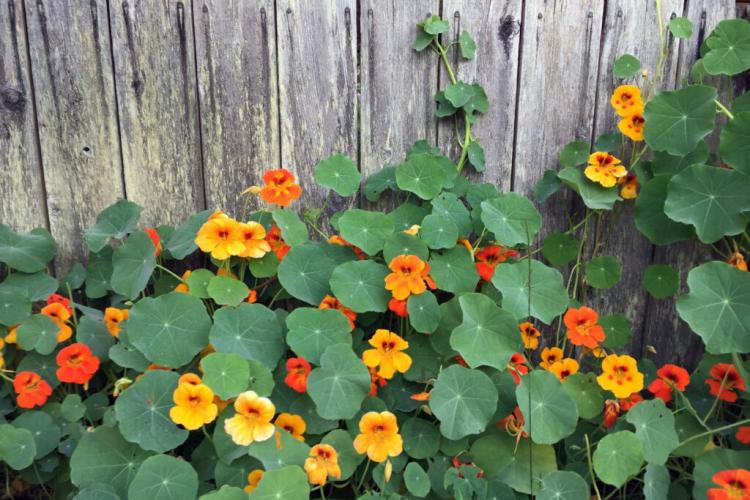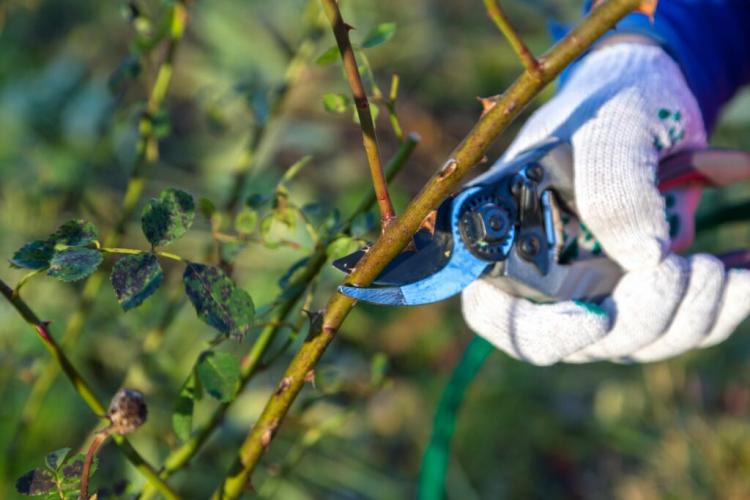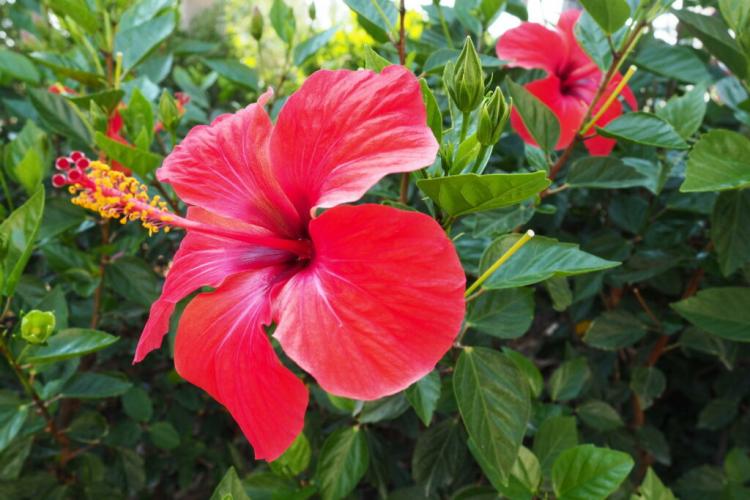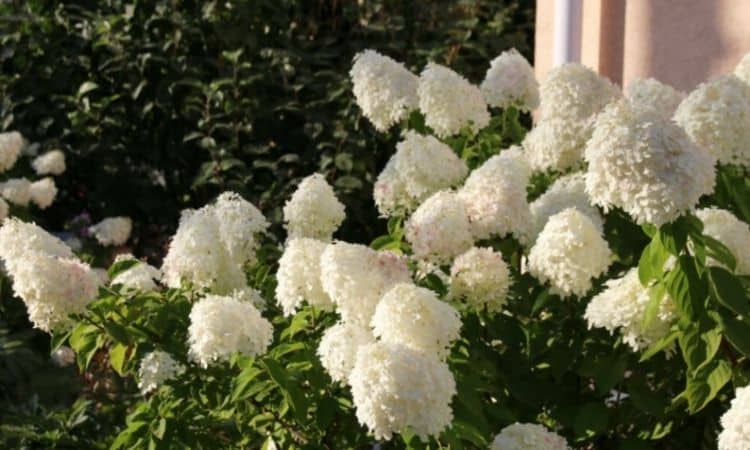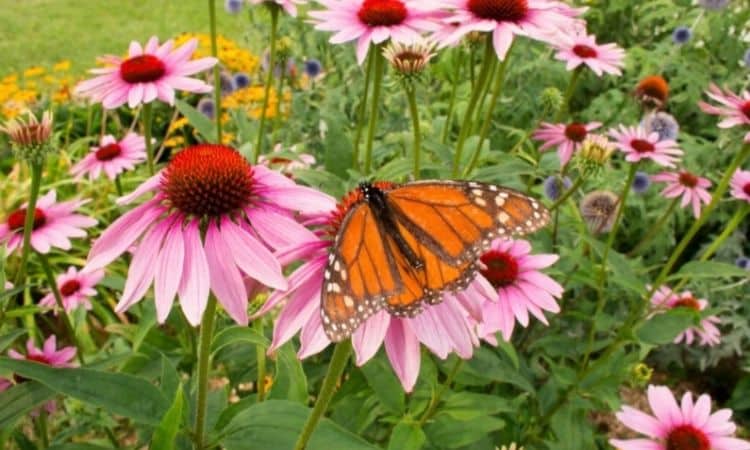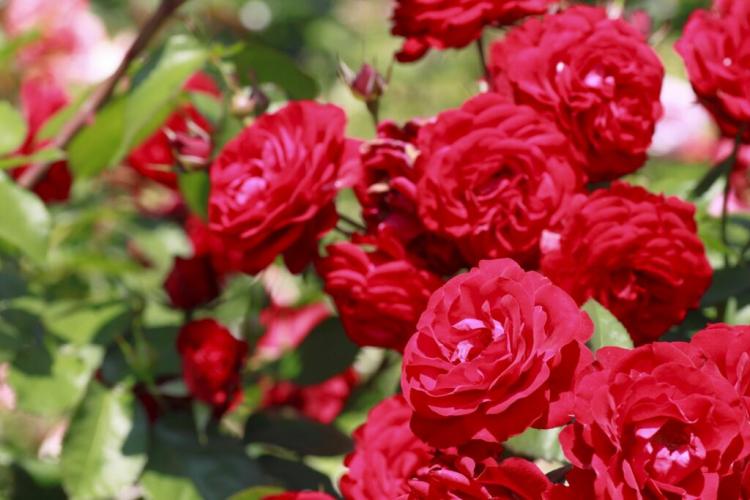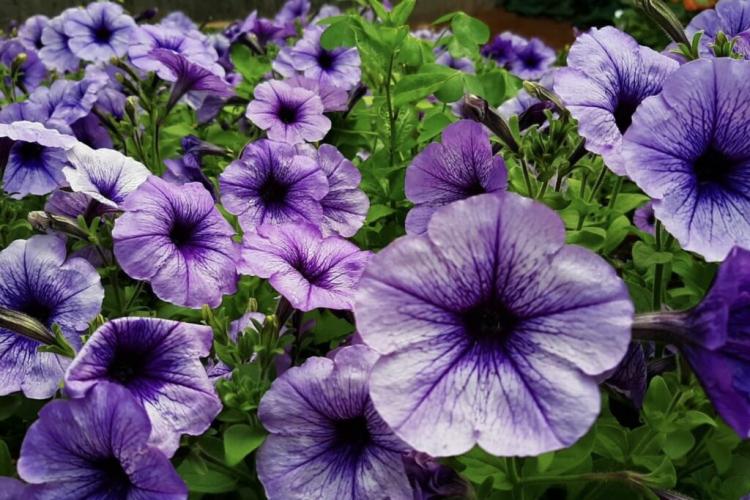Nasturtium Flowers: The Uncomplicated Exotic
The nasturtium is an exotic beauty and has a pungent, aromatic taste. We will inform you about the cultivation, varieties, care, and use of nasturtiums.
The nasturtium ( Tropaeolum ), also known as nasturtium or Indian cress, is often cultivated as an annual due to its sensitivity to cold. In this article, we will show you how to grow the decorative plant yourself, which varieties are recommended for the garden and pots, and how you can use the tasty flowers of the nasturtium in the kitchen.
Nasturtiums: Origin and History
Table of Contents
Within the plant kingdom, the nasturtiums form a family of their own, but in the USA gardens, the large nasturtium ( Tropaeolum majus ) and the small nasturtium ( Tropaeolum minus ) can be found in particular. Both of these are usually sold under the name nasturtium. Nasturtium originally comes from South America and was brought to Europe by Dutch merchant ships in the 17th century, where it quickly became a popular ornamental plant. It got its name from its flowers, the shape of which is reminiscent of the hoods of the nasturtiums. Even if the cress-like taste of the nasturtium is likely to suggest a relationship with the well-known garden cress, these two herbs are not related to each other.
Nasturtium varieties for growing
The cultivation of different types of nasturtiums has its own charm, because the flowers shine in the most beautiful colors – from delicate pink and pastel yellow, through strong red and orange, to velvety dark red. There are even varieties that show flowers in different colors on a plant. When buying seeds, the species also plays a major role – while the large nasturtium forms 1 to 3 meter long tendrils, the small nasturtium (as the name suggests) remains rather small and bushy in growth.
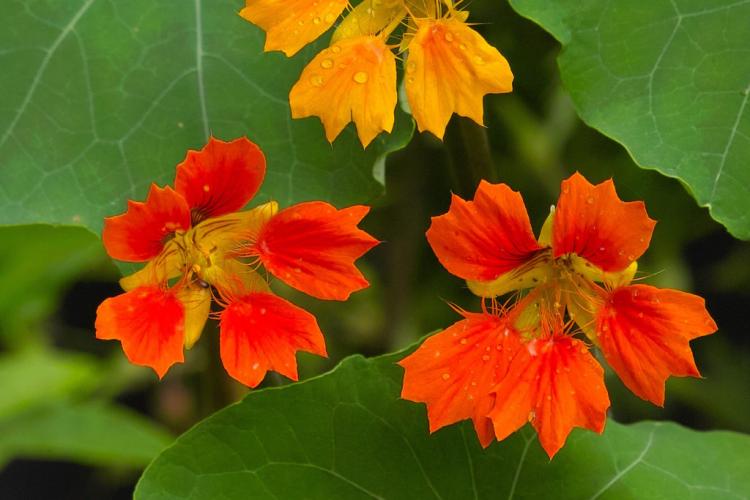
Popular varieties of nasturtiums at a glance:
- ‘Banana Split’: Attractive, banana-yellow flowers and an overhanging growth make this variety the perfect pot plant on the terrace and balcony.
- ‘Black Velvet’: This variety impresses with its velvety, black-red flowers.
- ‘Phoenix’: A real feast for the eyes: The flowers of the ‘Phoenix’ variety enchant with yellow, red, and apricot-colored tones and an unusual shape with fringed petals.
- ‘Variegated Queen’: This variety bears its title for nothing because it is truly royal to look at! ‘Variegated Queen’ has white-green speckled foliage and the splendor of the flowers ranges from bright sunny yellow to strong red.
A larger selection of different types and varieties of nasturtiums can be found in this article.
Plant nasturtiums
The cultivation of nasturtiums in the garden or on the balcony is unproblematic since the exotic plant gets along excellently with little care if the right location is chosen. We’ll show you how to plant nasturtiums in pots and what to watch out for when sowing.
You might so like: Buy roses: guides and recommended sources of supply
The right location for nasturtiums
Nasturtiums thrive well on humus-rich, well-drained soils because they don’t like waterlogging at all. It also loves sunny to partially shaded locations. Due to its high water content, the nasturtium is sensitive even to mild minus temperatures and is therefore cultivated annually in the USA. Even the first-night frosts transform the colorful flowers into a tangle of dead plant parts within a very short time.
Plant nasturtiums in a pot
The nasturtium is also ideal for growing in a pot or balcony box. It is best to use normal garden soil as a substrate with some sand mixed in with it. You should also make sure that the planter has enough drainage holes to avoid waterlogging. Basically, the nasturtium in pots thrives in any location, but if you want rich flowers, you should pay attention to sufficient sun.

Sow nasturtiums
Because of their tropical origin, nasturtiums are very sensitive to the cold. Therefore, the sowing in the field should only take place after the ice saints to safely avoid last night’s frosts. The seeds are sown approx. 2 cm deep with a distance of 10 cm. Alternatively, three grains can be put into the earth every 20 cm. Incidentally, seeds can easily be obtained from your own plants in autumn.
You might so like: Gerbera in the pot, in the garden & as a cut flower
If you want to start growing earlier, you can prefer plants to the nasturtium inside. However, especially with strongly climbing varieties, sowing should not be started too early so that the vigorously sprouting young plants do not occupy the entire apartment as a habitat.
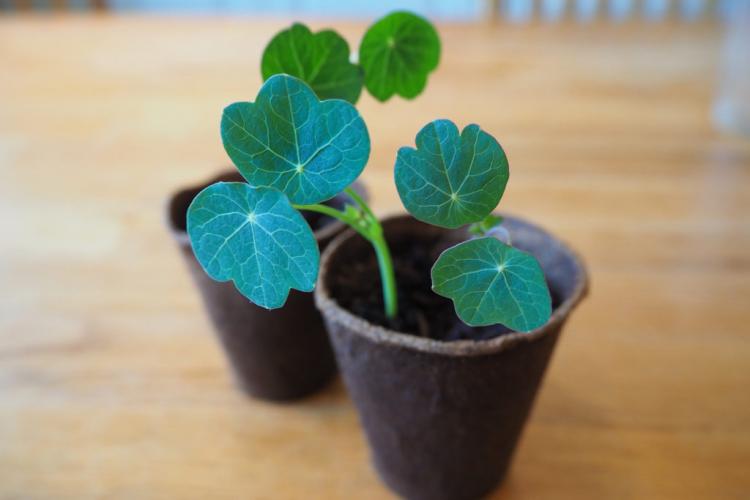
Maintain nasturtiums
Despite its South American roots, the nasturtium has proven to be easy to care for and uncomplicated if the location is suitable. On soils rich in humus, the plants only need to be fertilized lightly with mainly organic fertilizers, because too many nutrients ensure that they shoot into the leaves and only produce a few flowers. Organic flower fertilizer with long-term effects, which releases its nutrients slowly and gently, is very suitable. There is no danger that the nasturtium shoots into the leaf and hardly forms flowers. You can safely do it without pruning. However, the nasturtium can handle a courageous grip on scissors if you want to contain the climbing plant a little.
Harvest and store nasturtiums
The leaves of the capuchin flower can be harvested during the entire growing season. From the beginning of the flowering period in June until the first frosts in autumn, the plants produce tons of colorful flowers and seed pods, which are also edible.
The abundant harvest of leaves, flowers, and seed pods call for processing! But preserving the delicious seasoning is difficult because the flowers and leaves are neither suitable for drying nor freezing. However, there is the option of inserting buds and unripe seed pods such as capers, making herb vinegar, or delicious pesto from the leaves, which can be stored in the refrigerator for a few weeks.
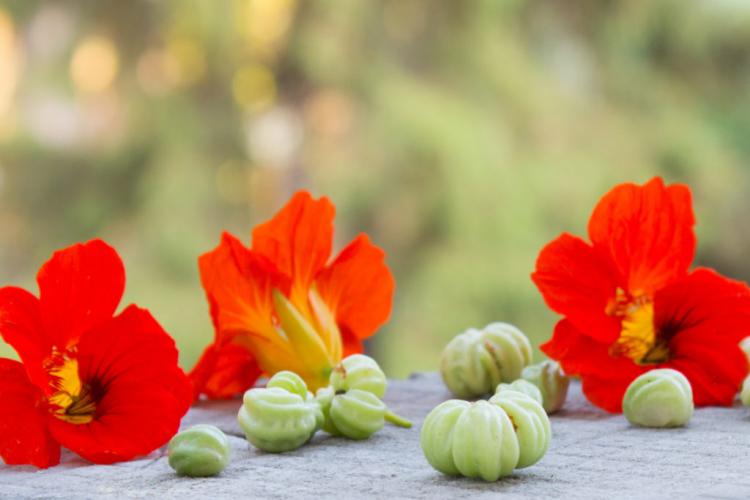
Ingredients and uses of nasturtium
Mustard oil glucosides give nasturtiums their sharp, cress-like taste. Their healing effect on bacteria, viruses, and fungi is undisputed; In 2013 the nasturtium was even voted Medicinal Plant of the Year. The plant extract is often used to prevent urinary tract infections and colds. But the plant also contains other healthy ingredients – including vitamin C, carotenoids, flavonoids, and sulfur. Nasturtiums taste best freshly picked – for example in herb butter and quark, like a spicy salad ingredient, or an edible flower decoration. The flowers filled with cream cheese are a special delicacy. The larger leaves can also be filled like vine leaves.
Nasturtium: diseases and pests
Two pests that can harm the exotic beauty are the hungry caterpillars of the great cabbage white butterfly and aphids. In the past, attempts were made to make use of this fact in the vegetable garden: As an “aphid catcher”, nasturtiums were supposed to keep the pests away from other endangered plants. However, this method is only successful in exceptional cases, as the different types of pests have specialized in very specific host plants and cannot even be dissuaded by the juicy shoots of the nasturtiums.
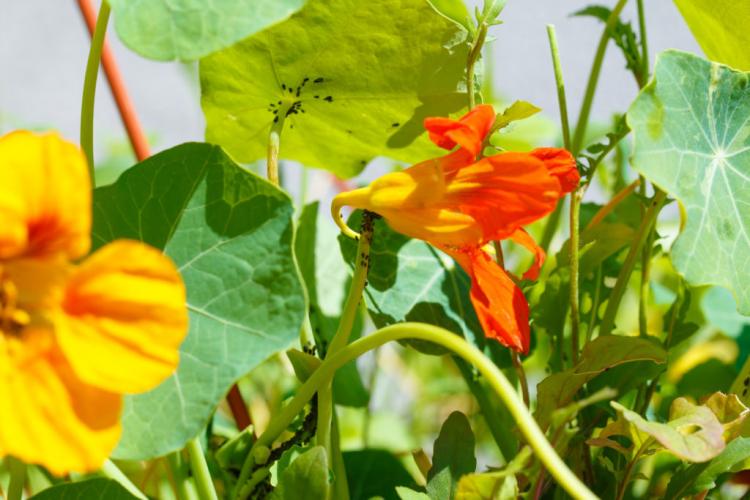
Simple home remedies, such as regular spraying with soapy water, often help against aphid infestation. Severely affected shoots can be removed. As with all plants that are supposed to end up on the plate at some point, poisonous pesticides are not the means of choice. Organic pest-free Neem is a biological and harmless means of successfully combating pests such as aphids. It is based on the 100% herbal and natural active ingredient neem and is used as a spray. Bees and other beneficial insects are not endangered.
